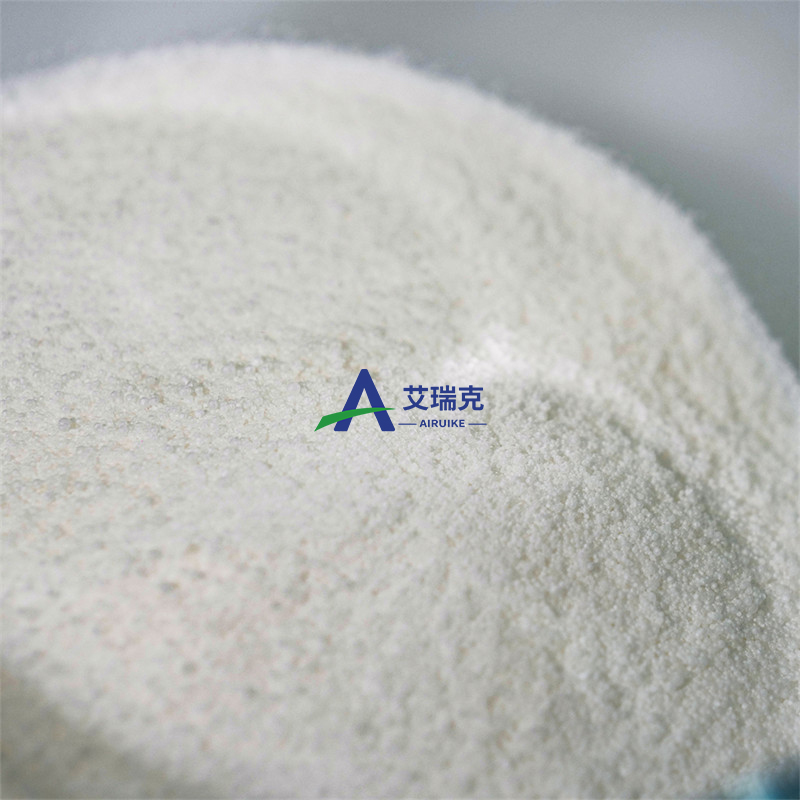The latest research progress of hematopoietic stem cells (phase 5)
-
Last Update: 2019-10-27
-
Source: Internet
-
Author: User
Search more information of high quality chemicals, good prices and reliable suppliers, visit
www.echemi.com
October 27, 2019 / Bio Valley BIOON / - -- hematopoietic stem cell (HSC) is a group of primitive hematopoietic cells existing in hematopoietic tissue It is not a tissue fixed cell, but can exist in hematopoietic tissue and blood Hematopoietic stem cells can appear in yolk sac at the 2nd week of human embryo After 5 months of pregnancy, bone marrow begins to make blood After birth, bone marrow becomes the main source of stem cells In hematopoietic tissue, the proportion is very small In modern medicine, hematopoietic stem cells play an important role in bone marrow transplantation and disease treatment In 1988, Professor Gluckman of France took the lead in the world in the successful use of cord blood stem cell transplantation, curing a child with anemia, marking the beginning of the era of cord blood stem cell transplantation About 60000 cases of bone marrow transplantation are carried out every year in the world, of which nearly 35000 and 25000 cases are completed with autologous and allogeneic hematopoietic stem cells respectively The sources of hematopoietic stem cells mainly include bone marrow, peripheral blood and cord blood Nowadays, "bone marrow transplantation" has been gradually replaced by "peripheral blood stem cell transplantation" That is to say, donating bone marrow is no longer extracting bone marrow, but just "donating blood" Cord blood is the blood left in the umbilical cord and placenta after fetal delivery It is rich in hematopoietic stem cells and can be used to treat acute and chronic leukemia, some malignant tumors and other major diseases Based on this, this paper reviews the progress of hematopoietic stem cell research in recent years for the readers 1 ELife: magic! In a new study, researchers from the Catholic University of Leuven in Belgium and the Federal University of santacarina in Brazil found that a drug used to fight arthritis can also prevent a process that allows TB to infect and hijack hematopoietic stem cells Relevant research results were published in the Journal of eLife on October 22, 2019 The title of the paper is "an evolutionary ifn-il-6-cebp axis is linked to monocyte expansion and tuberculosis severity in humans" The corresponding authors are Johan van weyenberg, an immunologist at the Catholic University of Leuven, and Andr é B á FICA, an immunologist at the Federal University of Santa Catalina Source: medium.com The researchers used hematopoietic stem cells from bone marrow and cord blood from healthy donors "We put these hematopoietic stem cells in tubes and exposed them to TB," van weyenberg said Two processes occurred: the bacteria infected the stem cells and began to proliferate in them At the same time, these hematopoietic stem cells transform themselves into a very special kind of white blood cells Under normal circumstances, white blood cells protect our bodies from infection, but in this case, they are hijacked by the bacteria and become their ideal host cells The good news is that there is a way to stop this process "We did a large-scale computer analysis of the databases, which have genes that are important for both TB and hematopoietic stem cells," said Van weyenberg To our surprise, this analysis led us to find an anti arthritis drug: tocilizumab Adding the drug to a test tube can do a double trick: the transformation of hematopoietic stem cells to host cells stops, and the proliferation rate of TB bacteria slows down " 2 JAMA: clinical trials show that nonmyeloablative hematopoietic stem cell transplantation is promising for the treatment of relapsing remitting multiple sclerosis doi: 10.1001/jama.2018.18743 nonmyeloablative automatic hematopoietic stem cell transplantation, Non myeloablative HSCT represents a potential and effective method to slow or prevent relapsing remitting multiple sclerosis, but it is not clear whether it is better than disease modifying therapy (DMT) In a new clinical study, to compare the effect of nonmyeloablative autogenous HSCT and DMT on disease progression, researchers from the United States, Sweden, the United Kingdom and Brazil conducted a randomized clinical trial (clinical trial registration number: NCT00273364) The results showed that compared with DMT, non myeloablative HSCT significantly prolonged the time of disease progression The related research results were recently published in the Journal of JAMA The title of the paper is "effect of nonmyeloablative hematopoietic stem cell transformation vs continuous release modifying therapy on release progress in patients with releasing multiple sciences" Between September 20, 2005 and July 7, 2016, the authors recruited 110 relapsing remitting multiple sclerosis patients in four centers in the United States, Europe and South America: at least two relapses after DMT treatment in the previous year; expanded disability status scale, EDSS, with a score range of 0 to 10, 10 being the most severe neurological disability) was 2.0 to 6.0 The authors randomly assigned these patients The last follow-up occurred in January 2018, and database locking occurred in February 2018 Of the 110 randomly assigned patients (73 [66%] women; average age 36 [SD, 8.6] years), 103 continued to participate in the clinical trial, of whom 98 were assessed in one year and 23 in five years (median follow-up 2 years; average 2.8 years) Three patients in the HSCT group and 34 patients in the DMT group developed disease progression Due to the small number of events, the HSCT treatment group was unable to calculate the median time of progression The median progression time of DMT group was 24 months (interquartile interval 18-48 months) (risk ratio 0.07; 95% CI 0.02-0.24; P < 0.001) In the first year, the average EDSS score of HSCT group decreased from 3.38 to 2.36, while the average EDSS score of DMT group increased from 3.31 to 3.98 (the average difference between groups was - 1.7; 95% CI was - 2.03 to - 1.29; P < 0.001) No patient died, and no non hematopoietic level 4 toxic events (such as myocardial infarction, septicemia or other disabling or potentially life-threatening events) occurred in patients receiving HSCT 3 Neurology: clinical trials show that hematopoietic stem cell transplantation can reversibly transform into optic neuritis doi: 10.1212/wnl.0000000000008394 in a new clinical study, researchers from Feinberg School of medicine and Mayo Clinic of Northwestern University reported that hematopoietic stem cell transplantation can reversibly transform into a debilitating nervous system disease, which is called neuromyelitis Optica's disease causes half of the patients to be blind and lose the ability to walk within five years after diagnosis Most patients remain well after five years of hematopoietic stem cell transplantation, and can avoid drug treatment that costs up to $500000 a year The related research results were recently published in the Journal of Neurology The title of the paper is "automatic nonmyloablative thermopoietic stem cell transformation for neuromelitis optica" The picture is from cc0 public domain In this clinical study, 12 patients with optic neuromyelitis received hematopoietic stem cell transplantation Five years after transplantation, only two of the 12 patients had relapses and had to be re treated This seems to be the fourth chronic disease that can be reversed by hematopoietic stem cell transplantation "There is a clear difference between hematopoietic stem cell transplantation and drug therapy," said Dr Richard Burt, the first author of the paper, Professor of medicine at Feinberg School of medicine, Northwestern University and head of immunotherapy and autoimmune diseases Hematopoietic stem cell transplantation improved the neurological dysfunction and quality of life Their condition improved, and AQP4, the disease marker, disappeared for up to five years after transplantation 4 Blood: plant ingredients can improve the speed and effectiveness of gene therapy doi: 10.1182/blood.2019000040 at present, the treatment process of gene therapy needs to separate a very small number of hematopoietic stem cells from the blood of patients These cells can self renew and produce all other types of blood cells The therapeutic genes are then introduced into these cells through specially designed viruses called lentivirus vectors However, hematopoietic stem cells are highly resistant to viral attack They protect themselves with interferon induced transmembrane protein IFITM, which intercepts lentiviral vectors As a result, torbet says, successful gene delivery to hematopoietic stem cells may require a lot of experimentation - as well as a lot of expensive gene therapy vectors Dr torbet, an associate professor of immunology and microbiology at Scripps Institute in the United States, and his team found that when resveratrol like compound carbacol a was added to human hematopoietic stem cells with a mixture of lentivirus vectors, these cells would lose their natural defense ability and make the lentivirus vectors more accessible Once treated stem cells are transplanted into mice, they divide and produce blood cells that contain new genetic information Another major advantage of this method is its short time: if the gene delivery treatment of blood stem cells can be completed in a shorter time, the cells can be re applied to patients faster This not only makes treatment easier for patients, but also helps ensure that stem cells don't lose their self-renewal properties, torbett said 5 Cell subjournal: interesting! Viagra is expected to be used in hematopoietic stem cell transplantation doi: 10.1016/j.stemcr.2019.09.004 in a new study, researchers from the University of California, Santa Cruz developed a fast way to obtain donor hematopoietic stem cells for bone marrow transplantation New method, which uses Viagra in combination with another drug, Plerixafor The relevant research results were published online in the journal stem cell reports on October 10, 2019, with the title of "Viagra enables efficient, single day hematopoietic stem cell mobility" Picture from stem cell reports, 2019, DOI: 10.1016/j.stemcr.2019.09.004 Bone marrow transplantation is mainly used to treat cancer It is a life-saving treatment plan It can recover the hematopoietic stem cells that produce new blood cells in the life of patients These hematopoietic stem cells usually only exist in bone marrow In order to obtain hematopoietic stem cells for bone marrow transplantation, people need to drill holes in the hip bone and use a special needle to extract hematopoietic stem cells directly from the bone marrow Today, it is more common to use drugs to get hematopoietic stem cells from the bone marrow into the blood and then collect them from the blood The standard drug regimen for mobilizing hematopoietic stem cells from bone marrow to blood requires the injection of granulocyte colony stimulating factor (GCSF) for several consecutive days, and then the collection of hematopoietic stem cells, which is usually carried out 4 to 6 days after the injection of GCSF Although this method is not as invasive as extracting hematopoietic stem cells directly from bone marrow, it is not always successful, and often causes bone pain and other side effects, which can not be tolerated by many patients who may benefit from bone marrow transplantation The new study shows an alternative that mobilizes hematopoietic stem cells in bone marrow within two hours It involves
This article is an English version of an article which is originally in the Chinese language on echemi.com and is provided for information purposes only.
This website makes no representation or warranty of any kind, either expressed or implied, as to the accuracy, completeness ownership or reliability of
the article or any translations thereof. If you have any concerns or complaints relating to the article, please send an email, providing a detailed
description of the concern or complaint, to
service@echemi.com. A staff member will contact you within 5 working days. Once verified, infringing content
will be removed immediately.







